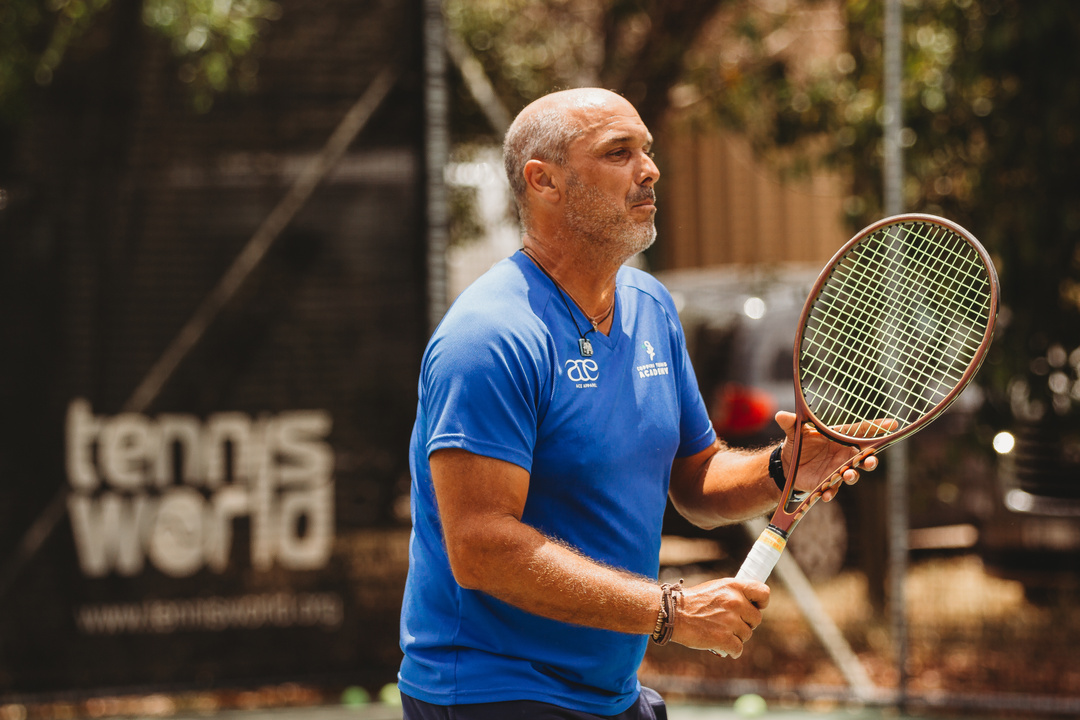
One of the most common mistakes coaches make—and that many players silently endure—is the so-called “righting reflex”: the tendency of a coach to correct every mistake immediately, to provide the solution before the athlete has even had the chance to process the problem.
At first glance, it seems logical: if a player misses a forehand, you tell them where to place the elbow; if they miss a serve, you remind them to toss higher. But tennis, like life, isn’t a chain of instructions to follow—it’s a complex process of personal discovery.
👉 Why doesn’t “fixing everything” work?
Because it creates resistance.
The player feels judged, loses autonomy, and most importantly, stops thinking for themselves. Instead of growing as an independent, thinking athlete, they become a passive executor. And in tennis—where you’re alone on court—that is the worst training possible. When the coach isn’t there, who tells you what to do?
Roger Federer put it crystal clear:
“You have to become your own coach. Nobody can tell you what to do when you’re out there. You have to learn to listen to yourself.”
And Federer didn’t become Federer because someone corrected every mistake, but because he learned to read situations, make decisions, and trust his own sensations.
🎾 Examples from Tennis
Rafael Nadal and Uncle Toni.
Toni Nadal didn’t “fix” everything. Often, he let Rafa make mistakes and reflect, guiding him only with a few essential phrases. He didn’t tell him what to do point by point—he taught him to find the answers himself.
Serena Williams and Patrick Mouratoglou.
Patrick often let Serena “argue with herself” in practice, without stepping in. This strengthened her ability to self-analyze—crucial during high-pressure moments.
Novak Djokovic.
One of Djokovic’s greatest strengths is his ability to read a match tactically and change strategy on his own. This didn’t come from a coach constantly “fixing” him, but from an environment that pushed him to be creative and independent.
🔑 How Coaches (and Players) Can Escape the “Fix Everything” Trap
-
Ask more questions than you give answers.
Instead of: “You missed because you didn’t bend your knees,”
try: “What did you feel on that shot? What could you adjust?” -
Encourage autonomy.
The coach shouldn’t be a remote control, but a facilitator. The more a player finds solutions on their own, the stronger they’ll be in matches. -
Accept mistakes as part of the process.
Tennis is built on errors. If the coach corrects every one immediately, the player never develops resilience to handle them independently. -
Promote reflection.
After practice or a match, let the player write down what they learned, what worked, and what they can improve.
As legendary basketball coach John Wooden said:
“A good coach can change a game. A great coach can change a life.”
In tennis, changing a life means teaching a player to be independent, creative, and mentally strong.
🎾 The Lesson for Players
If you’re a player, don’t always wait for your coach to hand you the solution. Start asking yourself questions, analyzing your errors, and seeking alternatives. On court, you’re alone—the more you develop this skill, the freer and stronger you’ll become.
👉 Conclusion: Coaches fail when they try to “fix everything.” The best coaches teach players how to think. And the best players aren’t those who execute instructions perfectly—they are the ones who know how to create solutions under pressure, on their own, when it really counts.
by Federico

 English
English
